Let’s be honest—for those chilly mornings when your toes hit cold tile, there’s nothing like that radiant warmth seeping up from beneath. It’s not just comfort; it’s a little hug from your home. This guide gently walks you through installing electric under-tile heating, measuring for the right kit, and comparing standout products—all without overwhelming you.
What Is Heated Tile Floor Installation?
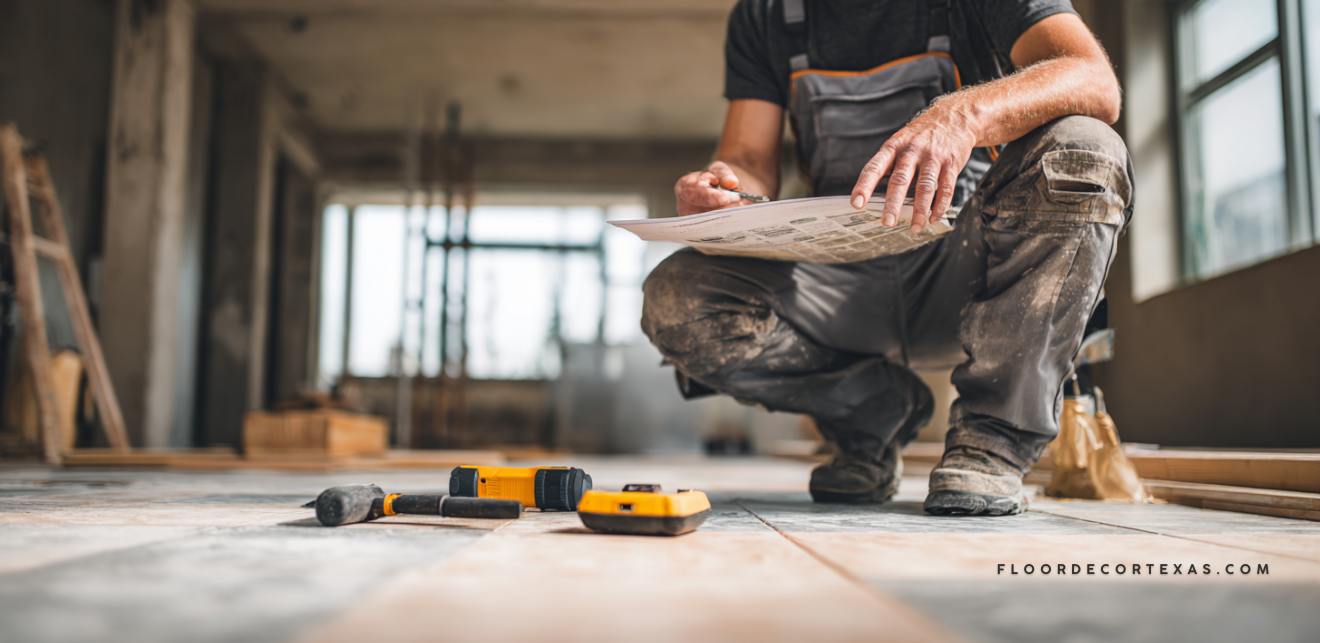
Basically, it’s installing a radiant heating system—usually electric mats or cables—beneath your tile (like ceramic, porcelain, or natural stone). Tiles are top-notch at carrying and holding heat, so they’re perfect for bathroom floors that need that toasty edge. (If you’re curious how radiant heating works with stone, this post on stone floors in cold climates is a wonderful companion read.)
Step-by-Step Electric System Installation
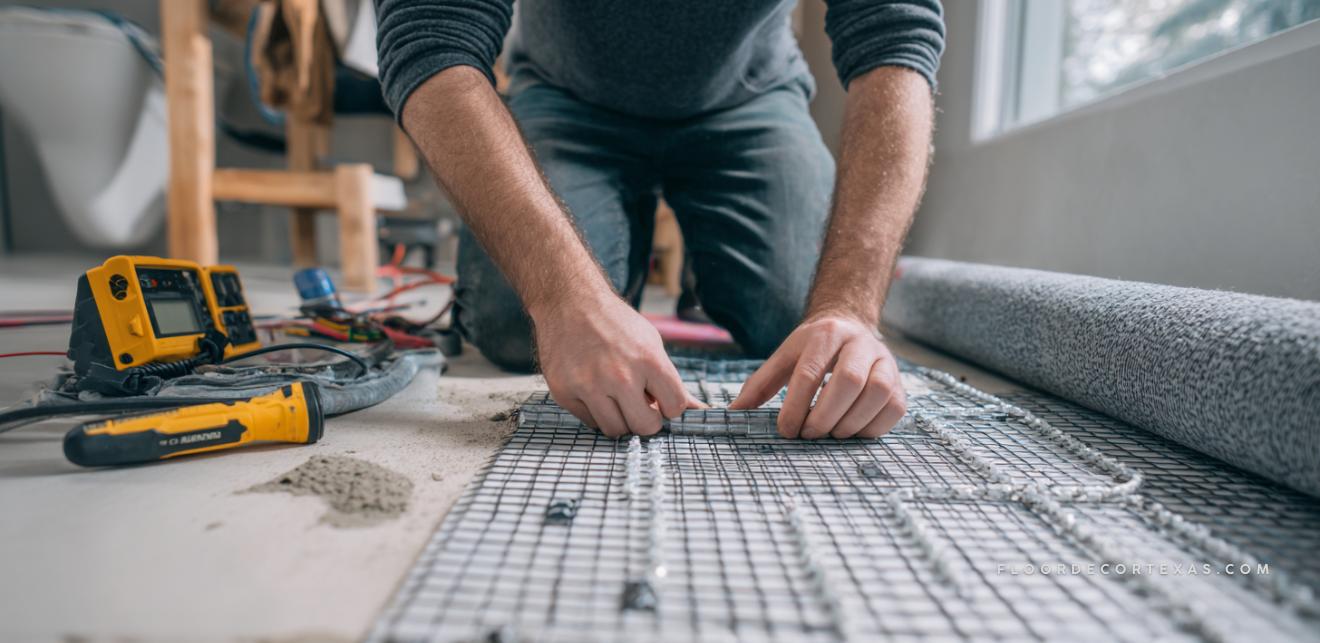
Here’s how I’d walk you through it, almost like we’re doing it together in your space:
- Plan & Prepare: Sketch the room layout. Mark zones to be heated, avoiding fixtures and leaving space for a dedicated circuit.
- Test the Heating Elements: Always use a digital ohmmeter—once before laying them, and again after—to catch any surprises early.
- Prep the Subfloor: Clean and level it thoroughly. If it’s concrete, an insulating underlayment like cork or foam is a smart extra layer of comfort.
- Install the Heating Element: Secure the mat or cable with hot glue or tape. Don’t cut the wires—cut only the mesh or membrane.
- Place the Sensor: Slide the thermostat sensor between—not on top of—the heating wires, anchoring it for accuracy.
- Make the Electrical Connections: Wire everything back to the thermostat and junction box. Use conduit and respect your local code. If you’re unsure, hiring a licensed electrician is a caring—and wise—move.
- Final Resistance Check: Do a last ohm check after everything’s laid to ensure no one bumped or nicked anything.
- Lay Your Tiles: Use thinset (follow manufacturer instructions about modified or unmodified),
press tiles gently, and avoid stressing the heating components beneath. - Set Up the Thermostat: Once things have cured, finish wiring and install the faceplate. Take it slow—let the system run tests before you call it good.
Electric vs. Hydronic Systems
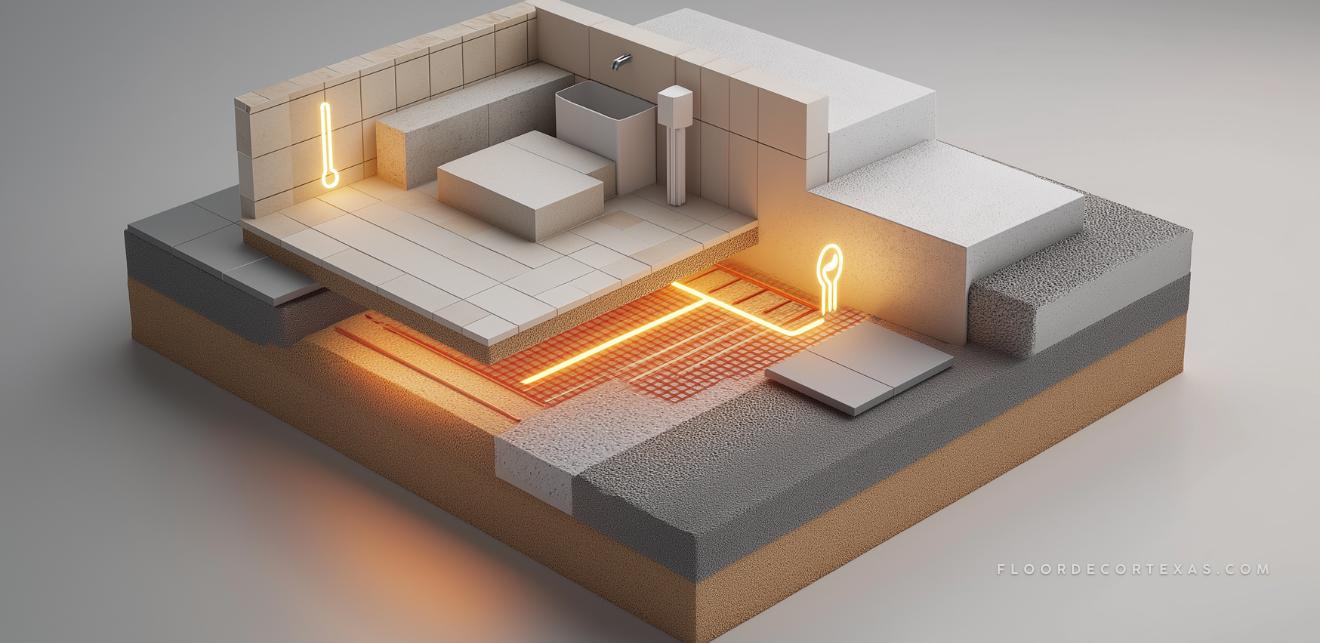
Putting in heated floors can go one of two ways. Electric systems are budget-friendly at first, kinda DIY-friendly, and great for small areas—but they can be pricier to run. On the other hand,
hydronic systems—which circulate warm water—are more economical over time and better for whole-house heating, though they generally call for a boiler or manifold plus a pro to install.
How to Resize (Size) Your Electric Heating Kit
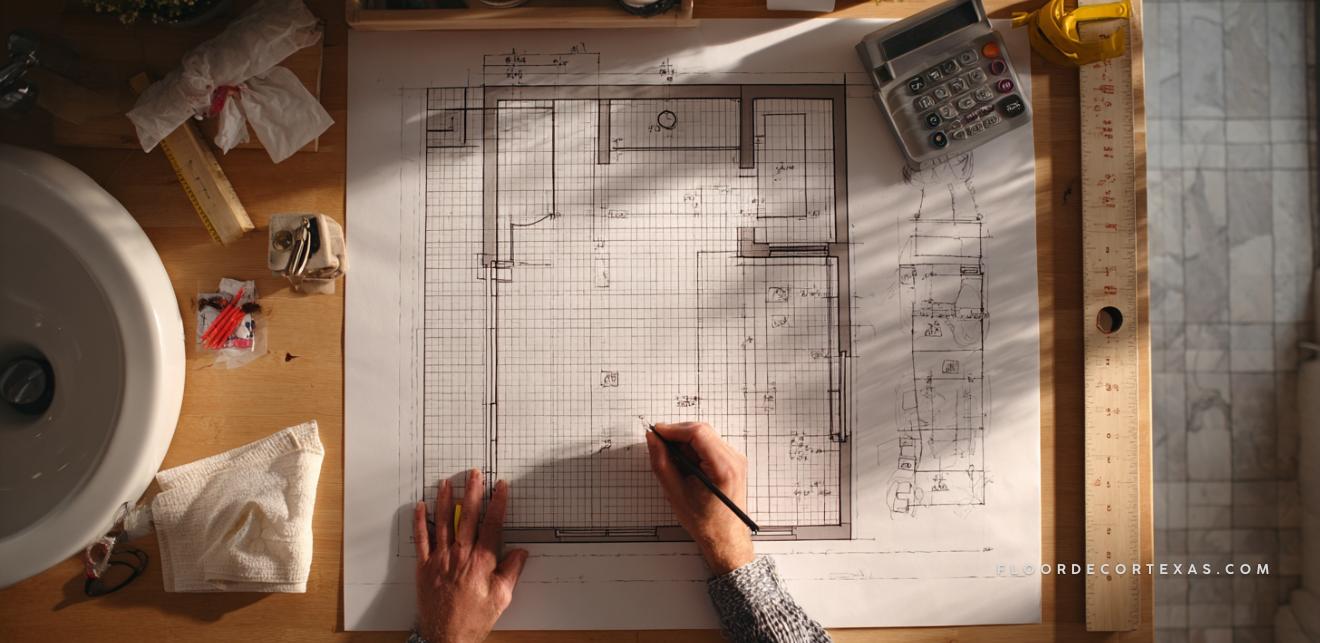
Getting the size right matters—not too big, not too small. Let’s break it down gently:
1. Measure the Usable Heated Area
Sketch your floor plan, figure out where furniture or sinks will sit—those parts don’t need heating. Remember setbacks: leave about 3″ from walls, 4″ from combustible surfaces, 6″ from toilet drains, and 8″ from HVAC vents. If your space is oddly shaped, break it into rectangles or triangles and add them up.
2. Match Available Kit Sizes
Pick a mat or cable length that’s closest to—but not less than—your warmed area. Keep in mind: you can only trim the mesh or membrane, not the wire itself.
3. Understand Voltage & Coverage Limits
Electric mats usually come in 120 V (good for up to about 150 sq ft) or 240 V (up to ~300 sq ft). Choose based on how big the space is.
4. Add a Buffer Zone
Kick in around an extra 10% of square footage for flexibility—real-life layouts rarely go perfectly according to plan.
5. Account for Heat Loss (Advanced, Optional)
Want precision? Run a heat-loss calc in watts per square foot and match your kit’s output to that need—especially helpful if insulation is thin or the room gets chilly.
What You Need to Start Your DIY Heated Floor Installation
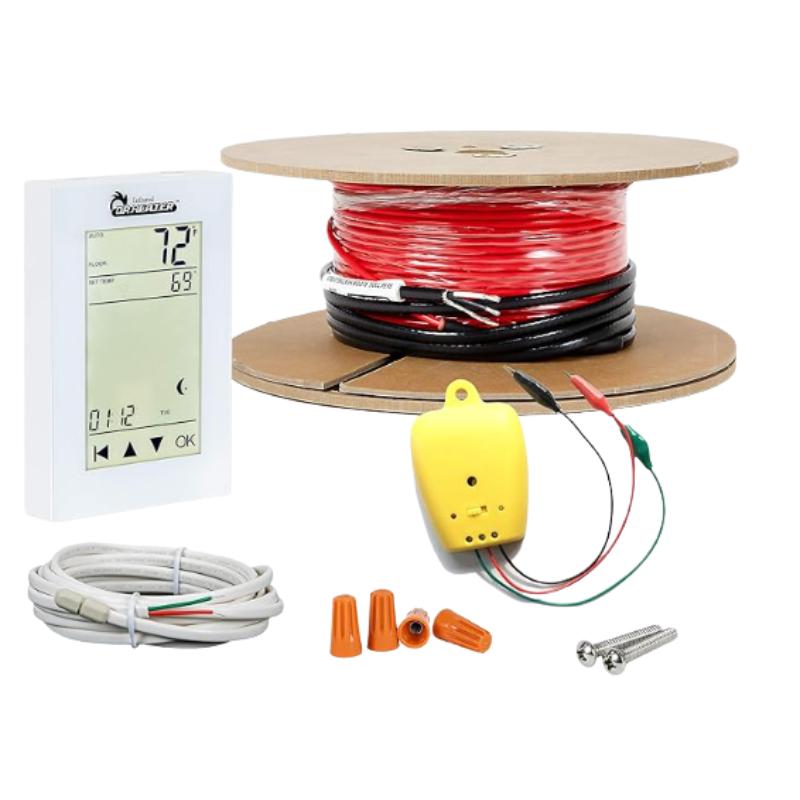
VEVOR Floor Heating Mat
|

Dr Infrared Cable Kit
|

SunTouch TapeMat
|
More products coming soon… |
Note: Always double-check listings on Amazon—sizes and specs shift faster than you can warm up a cold morning tile.
Pro Tips Before You Install

- Timeline: Most rooms take 1–3 days—depends on prep and drying time.
- Floor Height: You’ll be adding about ½″ total once mat, thinset, and tile are in place—plan that transition to the hallway or carpet accordingly.
- Efficiency & Comfort: Radiant heat doesn’t stir up dust and gives even warmth—especially dreamy in bathrooms or drafty corners.
- Codes & Permits: Follow NEC and local rules. If your thermostat doesn’t include GFCI protection, the circuit should. It’s not just smart—it’s safe.
- Warranty Tip: Those resistance tests you run? Keep the records. Many warranties ask for them if something goes sideways later.
FAQs
- Can I install this myself?
- Yes, if you’re comfortable with basic electrical work—especially with electric mat kits. But when it comes to the final wiring, hiring a pro is always a safe bet. See DIY materials mentioned above.
- Will it increase my energy bills?
- Somewhat, depending on space size and insulation. But localized warmth often lets you lower the thermostat for your whole home, so the trade-off can still feel cozy.
- Are these systems safe?
- Absolutely—when installed correctly, with proper resistance testing and code-compliant wiring, these systems are built to last and built to keep you safe.
- What’s the expected lifespan?
- If installed well, electric systems can last 20–30 years—so yes, this is a long-term comfort investment.
Finally
Turning cold tile into a warm, welcome part of your day isn’t just practical—it’s a small way to bring quiet joy into your home. With clear planning, thoughtful sizing, and the right kit, you can absolutely take this on as a DIY project, or with a hand from a pro friend. You’ve got this.
Here’s a friendly summary:
- Measure your heated footprint—exclude fixtures, add those safe setbacks.
- Pick a kit that meets or slightly exceeds that space (don’t forget your 10% comfort buffer).
- Gather your tools—ohmmeter, thinset, trowel, hot glue, thermostat wiring gear.
- Lay your mat or cable, test resistance at each stage.
- Have a qualified electrician inspect the final wiring so you’re fully safe and code-ready.
